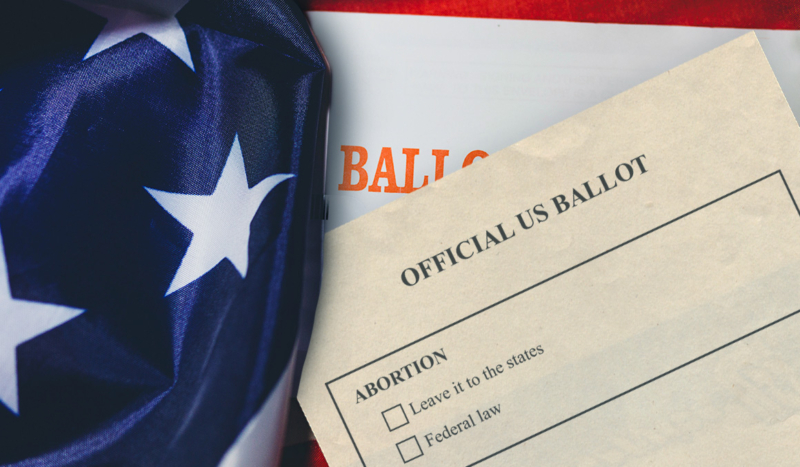
CV NEWS FEED // The Washington Post published an op-ed this week that used survey data and voting trend observations to argue “abortion is not the silver bullet that Democrats need in 2024.”
Guest writer Ruy Teixeira, a senior fellow at the American Enterprise Institute and politics editor of The Liberal Patriot newsletter, wrote the article, “Why abortion is not the silver bullet that Democrats need in 2024,” published on December 5.
Despite “conventional wisdom” that the cultural abortion issue is “unambiguously in the Democrats’ favor,” Teixeira argued, “the evidence suggests that when two candidates are on the ballot, support for abortion rights does not override partisanship. Many pro-choice voters are still quite willing to vote for Republican candidates.”
“According to a New York Times survey experiment, a Republican presidential candidate who advocates a leave-it-to-the-states approach runs 4 points ahead of a Democratic candidate who supports a federal law legalizing access to abortion nationwide,” he wrote.
Discussing how “many pro-choice voters are still quite willing to vote for Republican candidates,” Teixeira gave the example of Ohio, where voters
have now voted twice in favor of abortion rights. The first instance came in August, when they defeated by 14 points a referendum that was designed to make it harder to enshrine abortion rights in the state constitution. Then, a ballot initiative to do just that passed easily by 13 points last month.
But this is the same state that, in November 2022 (after the Dobbs decision was rendered), reelected by more than a million votes GOP Gov. Mike DeWine, who signed a bill limiting abortion to six weeks with no exceptions thereafter. Voters also backed pro-life Republican J.D. Vance for the Senate by 6 points over the generally pro-choice Democrat, Tim Ryan.
He argued that “Ohio is something of a microcosm of both Democrats’ opportunity — and challenge” due to its swing-state potency either way.
In contrast, voters in Kansas opposed an amendment to include abortion rights in their state constitution, but reelected a Democrat governor in 2022. Teixeira explained,
[Kansas] voters by 18 percentage points defeated an attempt to amend the state constitution to specify that there was no constitutional right to an abortion. A few months later, in the November general election, Democrat Laura Kelly was reelected governor by two points over a pro-life Republican nominee. It is probable that many pro-choice voters in Kansas opted to vote for a Republican when given a choice of parties at the ballot box.
Teixeira argued that next year, “more peripheral voters will return to the voting pool. These voters are more likely to be younger, more likely to be non-White, more likely to be working class and, critically, less ideological about issues, including abortion rights.”
As a result, the issue is more complicated and complex than many Democrats assume, he wrote:
Further complicating the issue is the fact that voters who show up in 2024 are likely to be different from those who have been delivering votes for Democrats lately. As Democrats have accumulated more educated voters, it is their voters, more so than the GOP’s, who are more likely to engage in off-year and special elections and turn out, especially when activated by an issue such as abortion rights. Thus, the 2024 election is likely to be a very different animal than contests in 2023 or 2022.
He concluded, “Add it all up, and it suggests that abortion, while helpful to Democrats in 2024, might not have the potency they ascribe to it. Democrats will need to think more creatively to fend off Trump and his party in 2024.”

